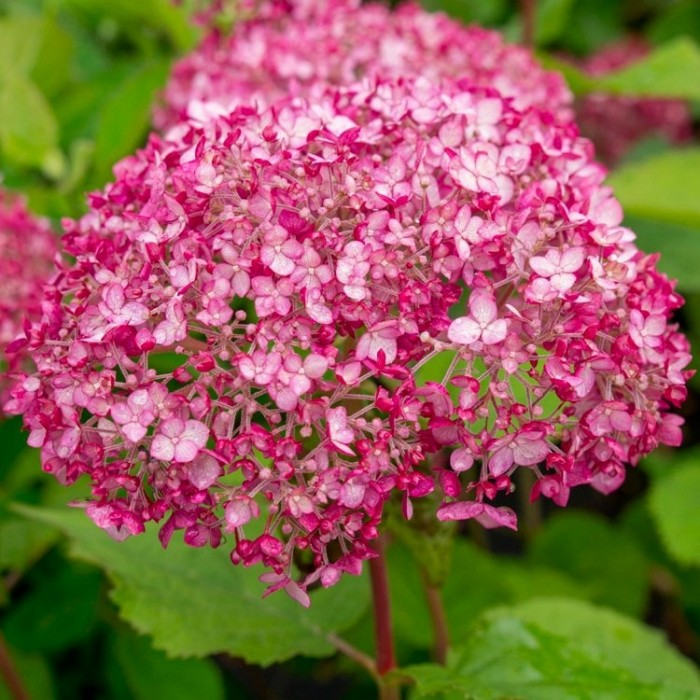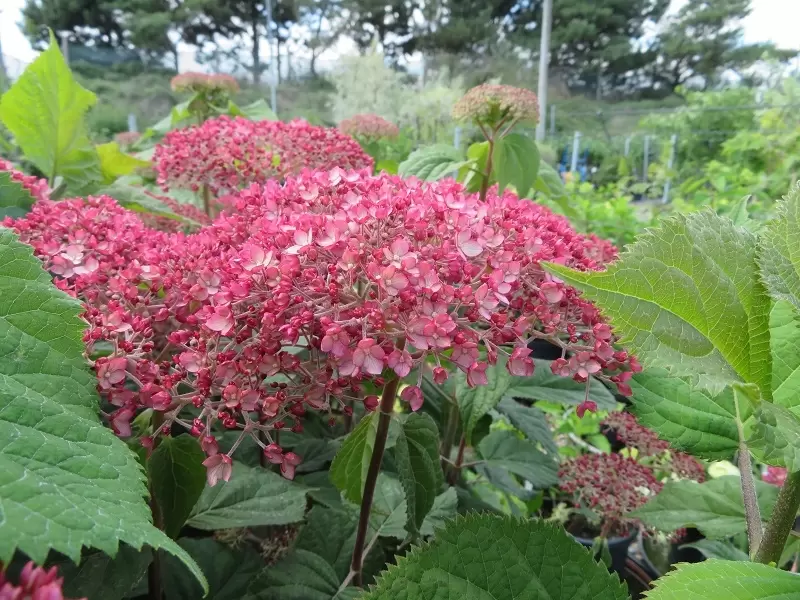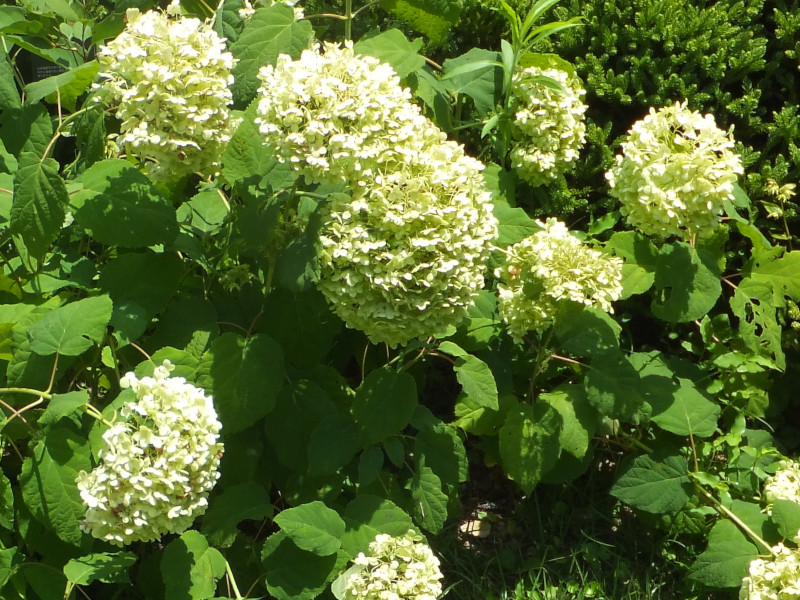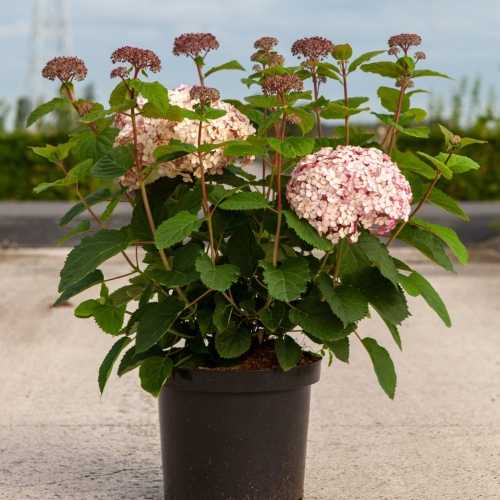The Hydrangea Arborescens Sweet Annabelle: The Ultimate Guide To Growing And Caring For This Beautiful Shrub
The Hydrangea Arborescens Sweet Annabelle: The Ultimate Guide to Growing and Caring for This Beautiful Shrub
Hydrangea arborescens Sweet Annabelle is a popular shrub known for its large, mop-head blooms. It is a relatively easy plant to care for, but there are a few things you need to know to keep it healthy and blooming year after year.
In this guide, we will cover everything you need to know about growing and caring for Hydrangea arborescens Sweet Annabelle. We will discuss plant selection, planting, watering, fertilizing, pruning, and pest control. We will also provide tips on how to extend the bloom time of your Annabelle hydrangeas.
So whether you are a beginner gardener or an experienced horticulturist, this guide has something for you. By the time you are finished reading, you will be an expert on how to grow and care for Hydrangea arborescens Sweet Annabelle.
Let's get started!
Plant Selection
When selecting a Hydrangea arborescens Sweet Annabelle plant, there are a few things you need to consider. First, think about the size of the plant. Annabelle hydrangeas can grow up to 6 feet tall and wide, so make sure you have enough space for it. Second, consider the climate in your area. Annabelle hydrangeas are hardy in zones 3-9, but they may need some protection from cold winters in colder climates. Finally, choose a plant that is healthy and free of pests or diseases.
Planting
Annabelle hydrangeas should be planted in full sun to partial shade. They prefer moist, well-drained soil. If your soil is sandy or clayey, you may need to add some compost or peat moss to improve drainage.
Watering
Annabelle hydrangeas need regular watering, especially during the first year after planting. Once they are established, they can tolerate some drought, but they will do best with deep waterings once a week.
Fertilizing
Annabelle hydrangeas should be fertilized in the spring and fall with a balanced fertilizer. You can use a slow-release fertilizer or a liquid fertilizer.
Pruning
Annabelle hydrangeas do not need a lot of pruning. You can simply remove any dead or damaged branches in the spring. If you want to encourage more blooms, you can prune the plant back to about 12 inches in the spring.
Pest Control
Annabelle hydrangeas are relatively pest-free. However, they can be susceptible to aphids, spider mites, and scale insects. If you see any pests on your plant, you can treat them with an insecticidal soap or neem oil.
Extending the Bloom Time
To extend the bloom time of your Annabelle hydrangeas, you can deadhead the spent blooms. This will encourage the plant to produce more blooms. You can also fertilize the plant in the summer.
With a little care and attention, Hydrangea arborescens Sweet Annabelle can be a beautiful addition to your garden. It is a relatively easy plant to grow, and it will reward you with its large, mop-head blooms for years to come.
Sweet Annabelle hydrangea is a beautiful and easy-to-grow shrub that is perfect for adding a touch of elegance to any garden. With its large, round clusters of creamy white flowers, Sweet Annabelle is sure to turn heads. And because it is a relatively low-maintenance plant, it is perfect for even the most novice gardeners.
If you are interested in learning more about Sweet Annabelle hydrangea, I suggest visiting . This website has a wealth of information about this popular shrub, including its care requirements, planting tips, and potential pests and diseases. You can also find photos and videos of Sweet Annabelle in bloom, so you can get a good idea of what this plant looks like in your garden.
FAQ of hydrangea arborescens sweet annabelle
- What is Hydrangea arborescens Sweet Annabelle?
Hydrangea arborescens Sweet Annabelle is a large, deciduous shrub that is native to eastern North America. It is known for its large, white flower heads that bloom in late spring to early summer. The flowers are sterile, meaning they do not produce seeds. However, they are still very attractive and make a great addition to any garden.
- How to care for Hydrangea arborescens Sweet Annabelle?
Hydrangea arborescens Sweet Annabelle is a relatively easy plant to care for. It prefers full sun to partial shade and moist, well-drained soil. It is important to water the plant regularly during the growing season, especially during hot, dry weather. The plant should also be fertilized once a year in the spring with a balanced fertilizer.
- What are some common pests and diseases of Hydrangea arborescens Sweet Annabelle?
Hydrangea arborescens Sweet Annabelle is susceptible to a few common pests and diseases. The most common pest is the aphid, which can suck the sap from the leaves and stems of the plant. Aphids can be controlled with insecticidal soap or neem oil. Another common pest is the Japanese beetle, which can also damage the leaves and stems of the plant. Japanese beetles can be controlled with a pesticide that is labeled for use on this pest.
The most common disease of Hydrangea arborescens Sweet Annabelle is powdery mildew, which can cause a white, powdery coating to form on the leaves of the plant. Powdery mildew can be controlled with a fungicide that is labeled for use on this disease.
- How to propagate Hydrangea arborescens Sweet Annabelle?
Hydrangea arborescens Sweet Annabelle can be propagated by several methods, including:
- Stem cuttings: Take 4-6 inch stem cuttings in the spring or early summer. Remove the lower leaves and dip the cuttings in rooting hormone. Plant the cuttings in a well-draining potting mix and keep the soil moist. The cuttings should root in 4-6 weeks.
- Division: Dig up a mature plant in the spring or fall and divide it into several smaller clumps. Replant the clumps in their new locations.
- Layering: In the spring or early summer, bend a stem of the plant down to the ground and bury the tip in the soil. Secure the tip in place with a U-shaped piece of wire. The stem should root in 4-6 weeks. Once the stem has rooted, you can cut it away from the mother plant and replant it in its new location.
- How to deadhead Hydrangea arborescens Sweet Annabelle?
Hydrangea arborescens Sweet Annabelle does not need to be deadheaded. However, you can deadhead the flowers if you want to keep the plant looking neat and tidy. To deadhead the flowers, simply remove the spent flower heads with a pair of sharp scissors. You can also cut back the stems of the plant by about one-third after the flowers have finished blooming. This will help to encourage new growth and more flowers next year.
Image of hydrangea arborescens sweet annabelle
5 different images of "hydrangea arborescens sweet annabelle" from Pinterest:





Post a Comment for "The Hydrangea Arborescens Sweet Annabelle: The Ultimate Guide To Growing And Caring For This Beautiful Shrub"